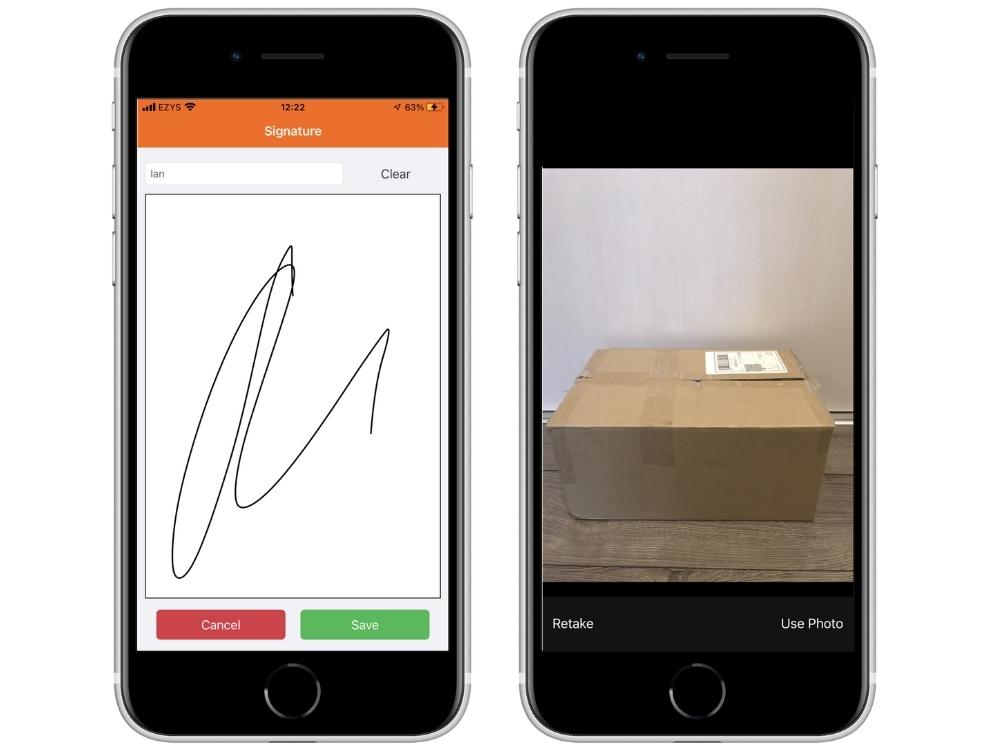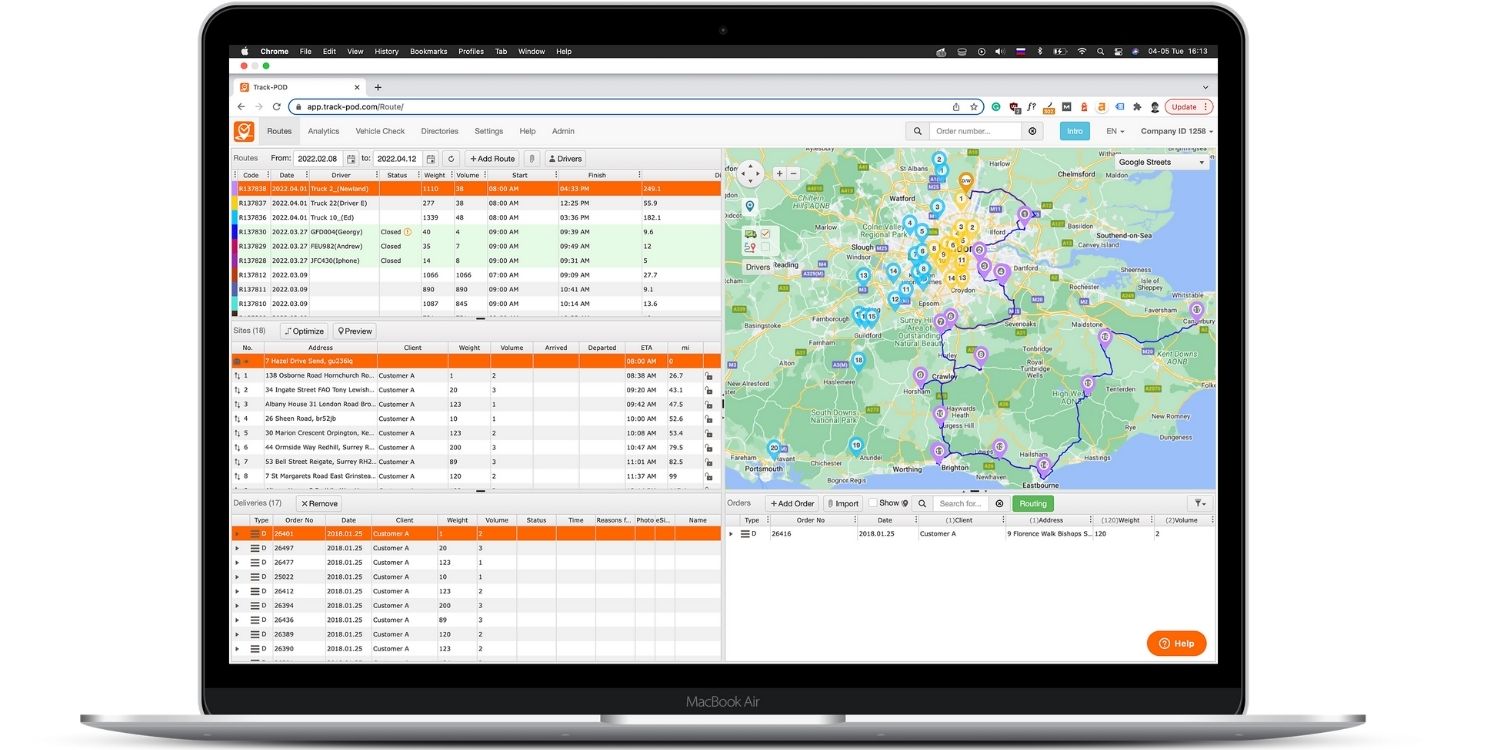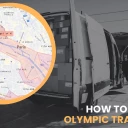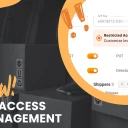Types of Delivery Services: Routing & Managing Buyer Expectations
Updated on
April 05, 2022
by
Yulia Miashkova

Being in the delivery business in 2022 is no easy feat.
On the one hand, it's a future-proof business. People want things delivered to their doorsteps more than ever, and the demand for delivery services is ever-rising.
On the other hand, consumer expectations are ever-rising too. Not to mention the struggle of competing with delivery giants like Amazon or UPS.
The result is that many businesses choose to outsource deliveries to bigger providers. Then they have more freedom but less control over the delivery experience.
At the same time, eCommerce logistics is the place for the gig economy because what drives growth is the ability to meet and manage buyer expectations.
In this article, we look at different types of delivery services customers expect in 2022. In addition to that, we look at ways to make it happen with self-delivery and the right route planning software.
Let's roll.
Same day delivery
Contactless delivery
On demand delivery
Free delivery
Carbon neutral delivery
Same day delivery
Same day delivery is a staple of marketplaces and online shops alike. People are willing to pay extra to have their goods delivered on the same day they placed the order.
"41% of consumers are willing to pay a charge for same-day delivery" - Source.
What does it mean for businesses and on-house delivery operations working to make it happen? Route planning and dispatch need to happen very fast, with at least one driver available for the job.
How realistic is that for a small delivery team? Realistic enough with advanced route optimization features.
Same day delivery routing solution
Same day delivery routing is impossible without automated route optimization. Automated means that you can plan multiple stop delivery routes in seconds.
The only issue is getting the orders into the system fast enough. Luckily, route planners like Track-POD have shipping integrations with platforms like Shopify and WooCommerce for instant order import.
As soon as the order has been placed, it's handed over to the routing dashboard for route planning, optimization, and dispatch to couriers.
When everything takes minutes to plan and schedule, same day delivery is perfectly doable for a small self-delivery operation.
Contactless delivery
Contactless delivery is a sign of the times. Even as the markets are getting over the no contact requirements, contactless delivery seems to be here to stay.
First of all, it's great for the customer.
- They don't have to be at home at the time of delivery.
- They don't need to worry about safety measures.
Second of all, it's good for the business.
- You can preschedule deliveries in bulk and cut costs.
- You up the rate of successful deliveries.
- You can go fully paperless with photo proof of delivery.
Let's see how this works in practice.
Contactless delivery routing solution
To execute contactless delivery, you only need two things. A delivery planning dashboard and a mobile app for the driver that can take photos.
Of course, electronic Proof of Delivery (ePOD) is more than that. The photo of the delivered package needs to populate a PDF shared with the customer post-delivery.
It also needs to be synced with the web dashboard and be instantly available to the dispatcher overseeing the delivery. Track-POD routing and Proof of Delivery does both.
“One thing we absolutely love is the ability to take photos because that saved us so many times.” - Stephanie Chupp, Director of Sustainability at Prep to Your Door

On demand delivery
On demand delivery is similar to same day delivery in a way that it requires instant route planning and optimization.
The difference is that on demand often needs to happen "while the food is still hot". This excludes any in-advance scheduling.
Or does it?
If your business is not 100% on demand restaurant delivery (in which case you'll have to make one route per order) you most likely have the resources to execute on demand delivery.
On demand delivery routing solution
If you're looking for ways to add on demand to your existing types of delivery services, Track-POD might be the tool for the job.
Among its routing and optimization features is order priority. It is what it sounds like: you can assign priority to orders, customers, and addresses to always serve them first or squeeze in last-minute delivery jobs.
This way, you can add an order to a preplanned delivery route instead of building a route just for that one order.
To complete on demand delivery experience, you can also make use of Track-POD's last mile delivery tracking features. Your customers will receive an email or SMS with a live tracking link and a dynamic ETA.
Learn how Veritiv Canada eliminated calls on order status with Track-POD live tracking
Free delivery
Free delivery is what most online buyers want.
"71% of consumers are more likely to buy items if they come with free shipping" - Source.
It's also something most in-house delivery operations can't afford because it means they need to cover the costs in-house as well.
The ever-rising fuel prices and overall delivery costs don't help either. The only sure-fire way to make it work is by optimizing every other aspect of your delivery workflow.
Free delivery routing solution
As an in-house logistics operation, free delivery is only possible when you've taken every measure to optimize your workflow and make the most of your driver and fleet resources.
This includes advanced multi-stop route planning with route optimization that helps you get the shortest and cheapest routes.
With shorter routes come lower mileage and fuel costs, shorter driver hours, and cheaper deliveries are such. Eventually, you can fine-tune your routing and scheduling to the point where you can provide free delivery - even as a small logistics operation.

Carbon neutral delivery
Carbon neutral delivery is another sign of the times.
The logistics and transportation industry is under a lot of pressure because of its carbon footprint.
As a result, transportation companies are launching initiatives to offset their carbon emissions, invest in tree planting, and be the best they can be in the public eye.
What can smaller courier services do? Invest in an EV fleet and/or cargo bikes as a zero-emissions alternative to gas trucks.
Carbon neutral delivery routing solution
Route planning and optimization need to account for different vehicle types.
This is the essence of fleet optimization that makes the most of every vehicle in the fleet by accounting for space, limitations, and any restrictions.
Routing is also different for different fleets. Therefore, your route planning software needs to account for whatever type of transport you're using and build efficient delivery routes accordingly.
Track-POD route planner builds and optimizes routes for the following fleet types.
- Truck/car.
- Motorcycle.
- Bicycle.
In addition to that, you can optimize by time, distance, or expense to compare route costs and choose the best strategy for your EV fleet if you have one.
Learn how ZMOVE uses Track-POD to run zero-emissions deliveries in Newcastle
Recap
Running a delivery operation in 2022 involves navigating different consumer demands.
Among them is providing multiple types of delivery services that online buyers expect to see - be it a logistics giant like FedEx or a local delivery operation.
I hope this guide gives you insight into how you can meet and manage buyer expectations in terms of routing different types of deliveries.
If you're curious to see Track-POD route planning and optimization solutions in action, book a free demo or start your 7-day free trial today.




